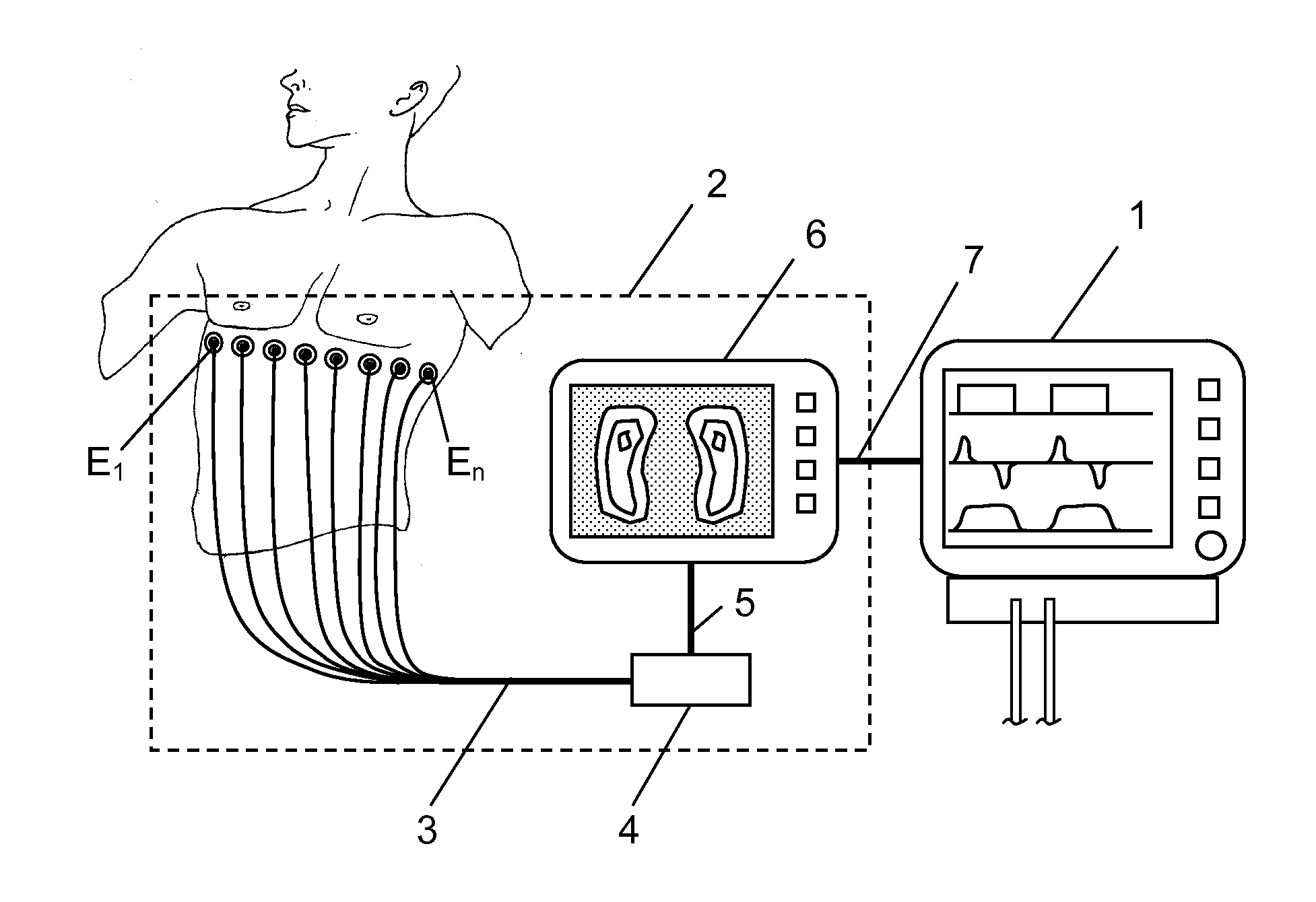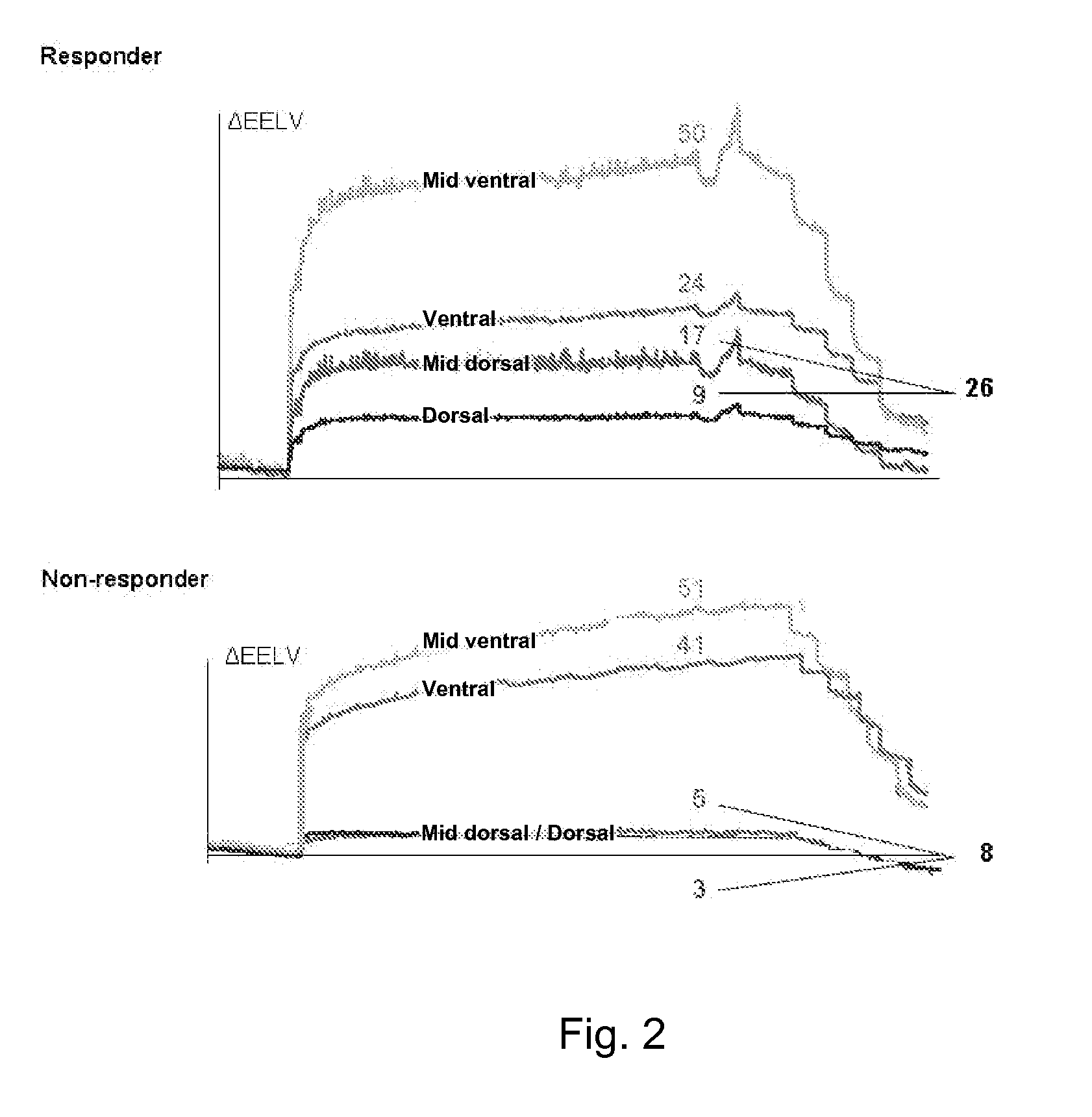Apparatus and method to determine functional lung characteristics
- Summary
- Abstract
- Description
- Claims
- Application Information
AI Technical Summary
Benefits of technology
Problems solved by technology
Method used
Image
Examples
Embodiment Construction
[0034]Referring to the drawings in particular, in FIG. 1 an EIT image of a cross-section of a lung is shown wherein the reconstructed impedance levels are represented by different grey levels. Such EIT image of the cross-section of the lung which is typically taken within the juxtadiaphragmatic plane corresponding to the fifth intercostal space is subdivided into regions of interest (ROI). In FIG. 1 the cross-sectional EIT image of the lung is subdivided into four segments (ROI 1-ROI 4) corresponding to the ventral, midventral, mid-dorsal and dorsal portions of the lung.
[0035]FIG. 9 schematically shows an apparatus according to the present invention, optionally connected via data-interface 7 to a ventilator / expirator 1. The EIT imaging device 2 includes a display unit 6 and a control and analysis unit 4 which is connected to the display unit 6 on the one hand and to a plurality of electrodes E1, . . . , En which are to be placed around the thorax of a patient. The control and analys...
PUM
 Login to View More
Login to View More Abstract
Description
Claims
Application Information
 Login to View More
Login to View More - R&D
- Intellectual Property
- Life Sciences
- Materials
- Tech Scout
- Unparalleled Data Quality
- Higher Quality Content
- 60% Fewer Hallucinations
Browse by: Latest US Patents, China's latest patents, Technical Efficacy Thesaurus, Application Domain, Technology Topic, Popular Technical Reports.
© 2025 PatSnap. All rights reserved.Legal|Privacy policy|Modern Slavery Act Transparency Statement|Sitemap|About US| Contact US: help@patsnap.com



